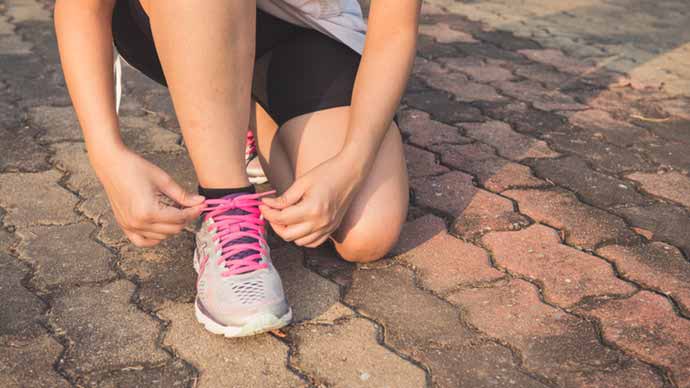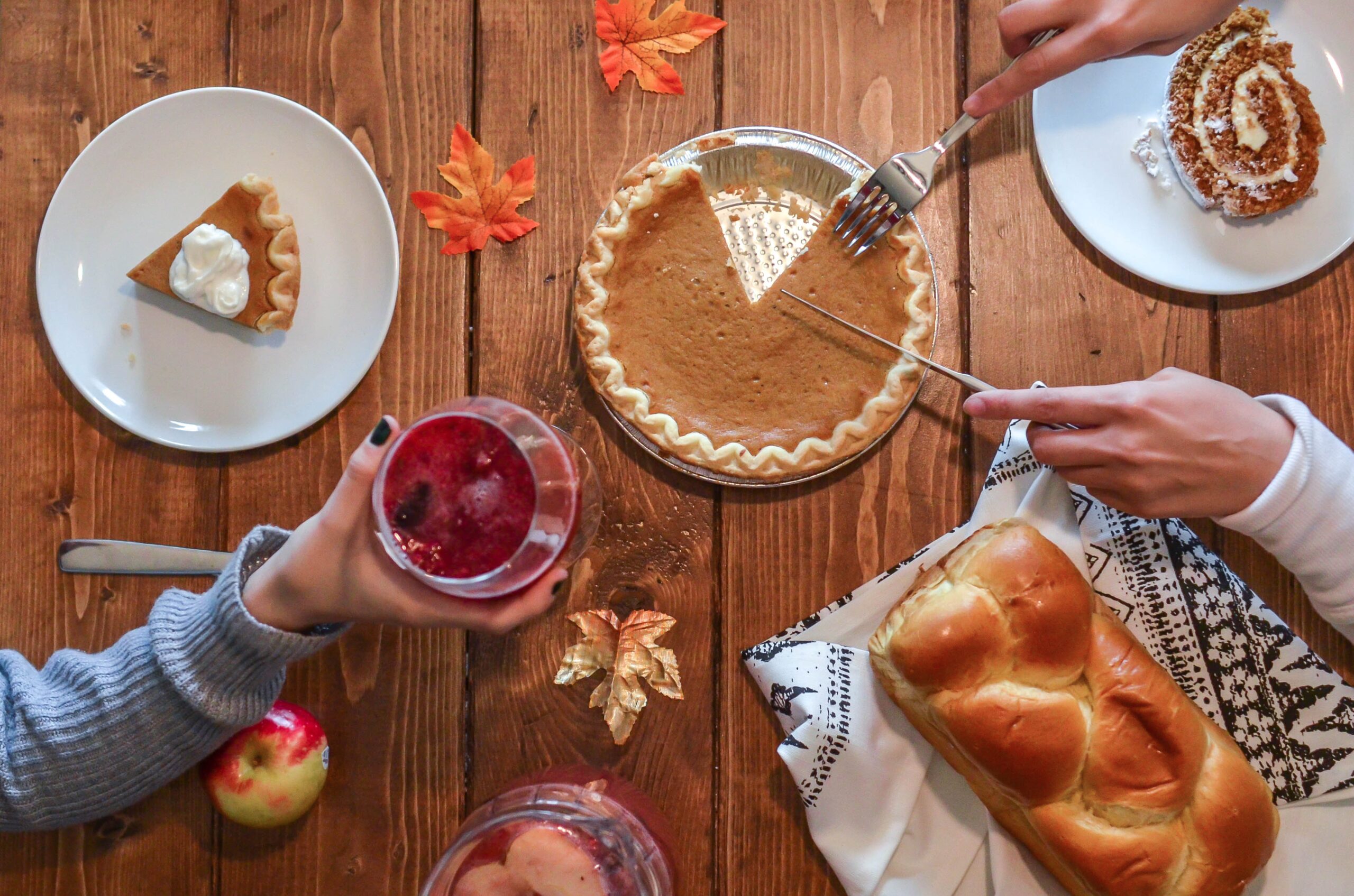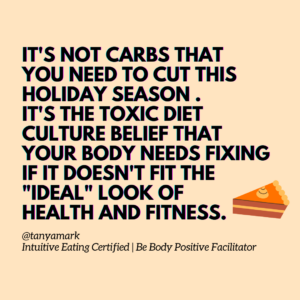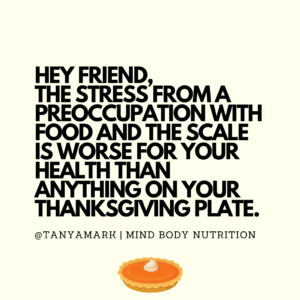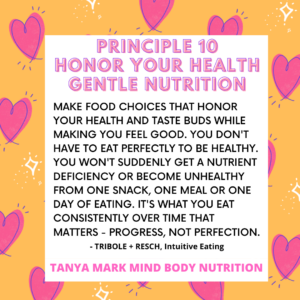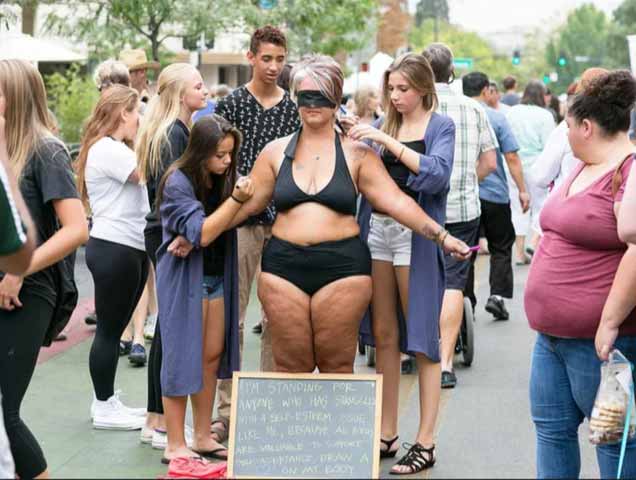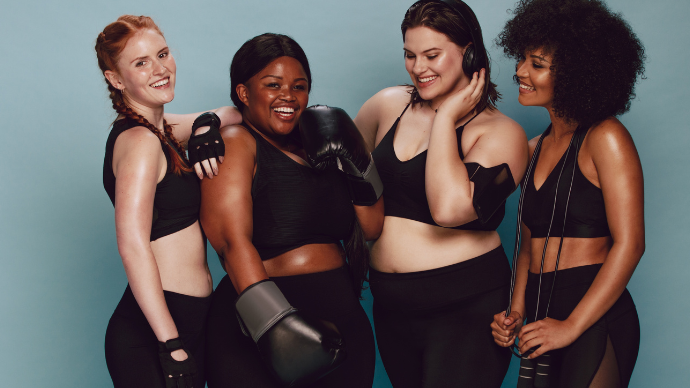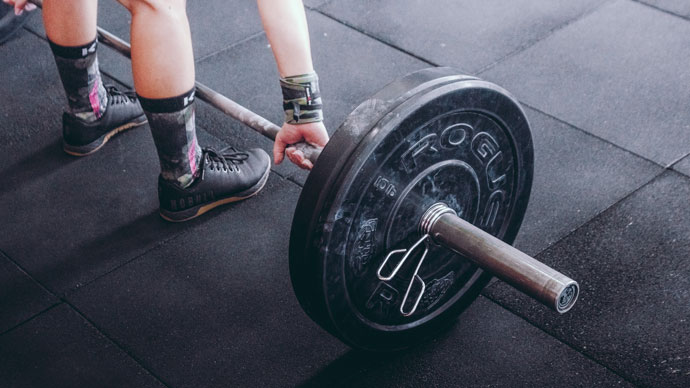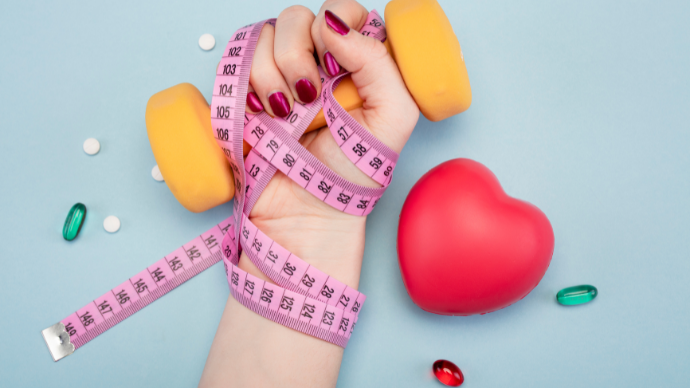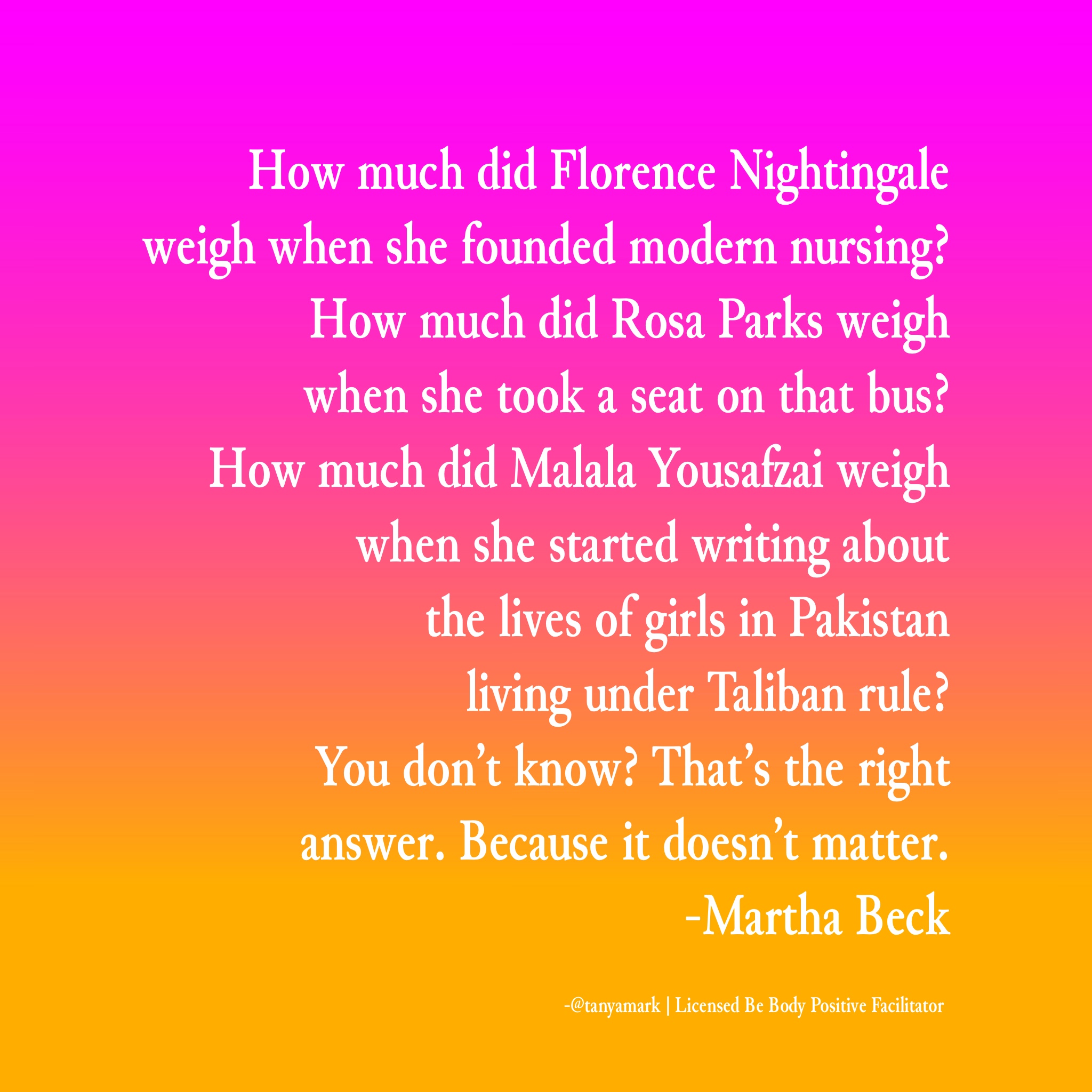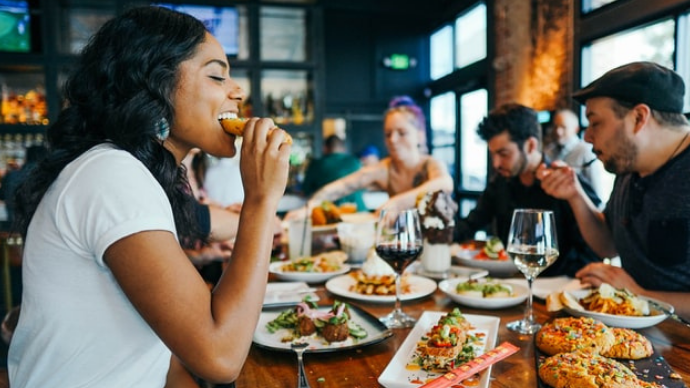You want to eat healthier without dieting, so you search for a solution.
You scroll through your social media feed and see a sponsored ad for a trending diet or eating plan. It promises to “fix” your body and make you feel better quickly and this sounds appealing. Because right now, you’re feeling burnt out, like your to-do list is never-ending, there’s just no time for yourself, you just want guidance and a place to start.
But you’re also thinking, “How can I feel and eat better without dieting?” Isn’t there another way?
Yes.
NEWS FLASH:

Eating better is a skill
The great news is that good nutrition is a skill that you learn, just like speaking Spanish or playing the piano. So you can stop searching for diets and eating plans.
And how do you learn anything new?
You break the skill down into bite size chunks, just like you did with Spanish and the piano.
You didn’t learn to do it in 21 days or learn everything all at once, did you? Heck no! Diets force you to overhaul your eating behaviors on day 1 and don’t create long-term sustainable shifts in your eating habits.
So what specific nutrition skills do you need?
Nutrition skill domains
Skill # 1: Eat enough nutrients.
This is a key domain to building balanced meals which balances your blood sugar (glucose, A1c) and prevents diabetes, increases your energy and reduces mood swings and cravings!
So what are the specific practices under this domain?
- Eat enough protein.
- Eat enough vegetables.
- Eat enough quality carbohydrates.
- Eat enough healthy fats.
- Drink enough water.
Practices are what you can do to build and improve the skill of eating enough nutrients.
Eat healthier without dieting
Let’s say that you want to practice eating enough protein.
We’ll collaborate on a specific action you are ready, willing and able to do reliably and consistently. Then, we’ll discuss potential challenges and obstacles that may come up for you in boosting your protein intake.
An example of a specific action could be adding an egg to your avocado toast.
But what if somedays you’re just not in the mood for eggs, then what? Or, what if you woke up late, you’re rushing around to make your kids breakfast and pack their lunches and no there’s just no time for your own breakfast?
Together, we will come up with a plan B and C so that you are more likely to make progress.
Success isn’t perfection.
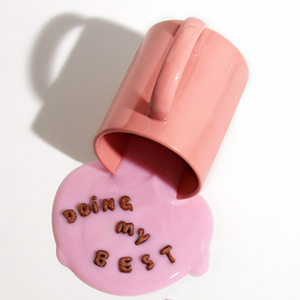
It’s not all or nothing, pass or fail.
Success is progress and it’s on a spectrum.
Maybe one day all hell broke loose and nope, despite backups plans, you ate no protein, no breakfast. It’s ok. You are human. It’s how you are taking care of yourself for the most part and a key tenet of Intuitive Eating.
This is how the deep health coaching process works.
We identify where you’re currently at with your nutrition and self-care skills. Then, you practice, practice practice.
So this is how you eat, feel and live better without dieting.
Non diet nutrition coaching focuses on adding more nutrient dense foods (rather than taking them away) and supporting you in making it happen it within the context of your real life.
Rate your healthy eating skills
Remember, just knowing about the nutrition skills below is not the same as doing and taking action. And just like skill # 1, there are many practices to build under each skill domain.
Skill # 1: Eat enough nutrients.
Skill # 2: Choose better quality foods.
Skill # 3: Eat well consistently.
Skill #4: Eat well intuitively.
This is the process that I’ll take you through to improve your health, whether it’s practicing a specific nutrition skill, adding movement back into your life, creating a nightly routine to sleep better, or adding 5 minutes of breathing into your day to manage stress. These are all health skills and they can be learned with practice.
Diets don’t teach you skills, nor do they give you the time necessary to create true and sustainable change. Instead they promote tons of weird stuff like bananas are “bad,” eating tons of bacon, and limiting your veggies. Ugh.
Eating better is a skill. I’ll say it over and over again.
Kick diet culture to the curb.
So if you want to eat healthier without dieting, immerse yourself in learning, practicing and taking specific actions to gain these four critical nutrition skills.
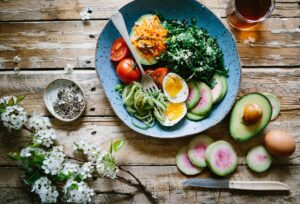
Free Assessment
Take my deep health ASSESSMENT to receive your complimentary 30-minute coaching session.
Get started now and move from feeling burnt out and overwhelmed to 💪 feeling empowered, knowing you get expert support and guidance to feel, eat and live healthier — for good!



